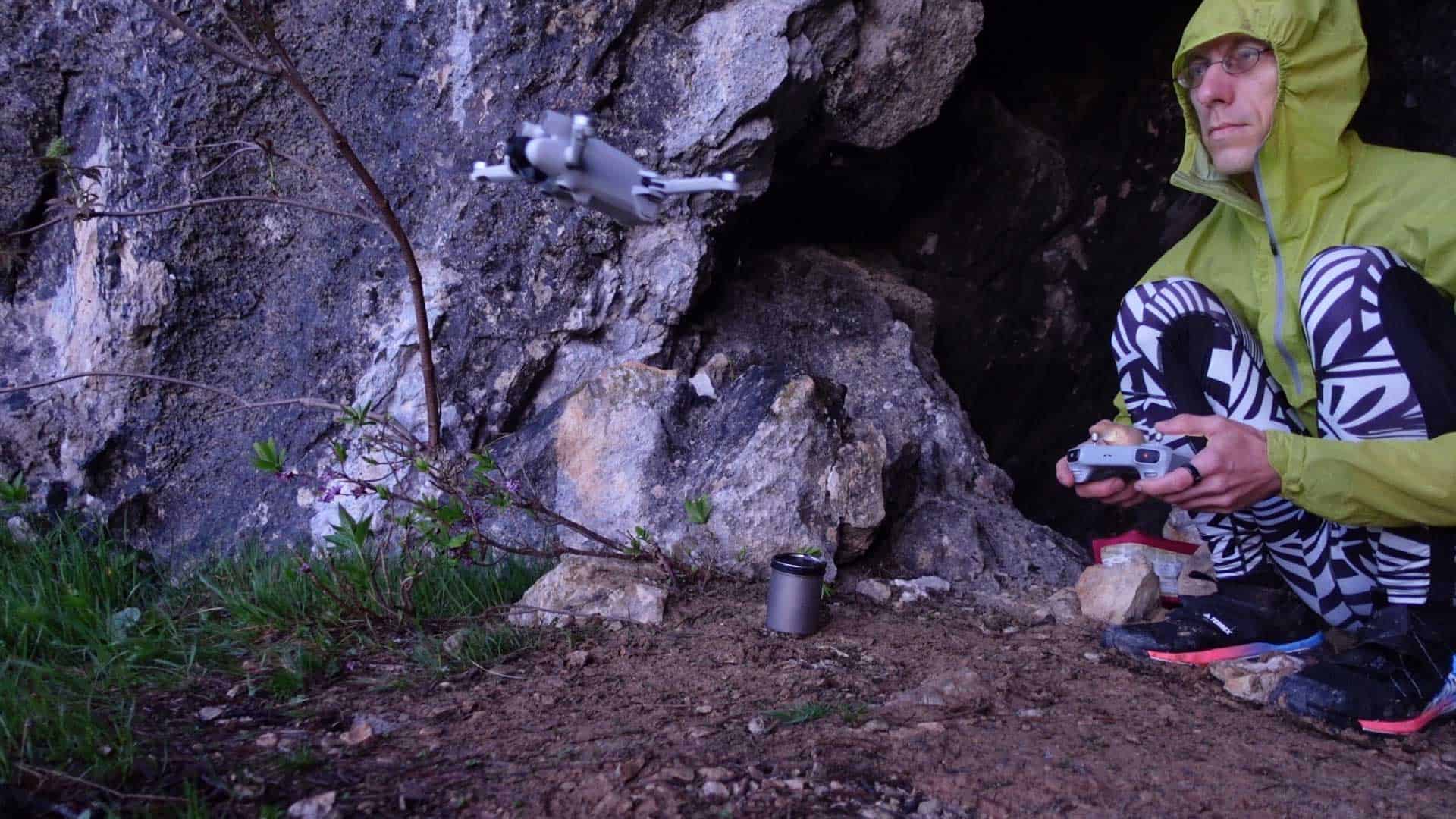A drone that weighs not even 250 grams but offers high quality features sounds like the ideal piece of gear for documenting mountain fast hiking tours and trail runs.
The DJI Mini 3 Pro may finally be that tool, too.
The DJI Mini Story So Far
The “Mini” series from DJI has so far always suffered from some downsides for this purpose.
DJI Spark
The Spark had ActiveTrack, meaning that it could automatically try to follow you.
Its non-foldable design and lack of obstacle avoidance made it a bit too large for transport and dangerous to use like that, however.
The remote control for it was not big, but it connected to the smartphone via Wi-Fi, with a rather unstable connection.
Flight time wasn’t long, and so it was not ideal to bring it onto mountain trails, even as it was a start.
Mavic Mini
The Mavic Mini was the first below-250-gram drone from DJI with the Mavic series’ foldable design.
Nice for transport, but for trail running, drone plus RC were actually rather heavy.
The smartphone now connected through a cable (or at least could do so, I’m not sure I remember this correctly), which was more stable but fiddly to set up.
And ActiveTrack went missing.
DJI Mini 2
The Mini 2 continued like that: Light by itself, but not so light in combination with the RC.
And the hassle of taking out the smartphone, connecting it with the RC through its cable (at least, a nicely inbuilt cable on the RC), getting DJI Fly started, was always a bit too long for me to just quickly get a shot.
It all took time… and then it wasn’t just once that I got a call on my phone while the drone was up in the air.
So suddenly, the device used to keep control of the drone was busy. I, the pilot, was distracted… all not good.
ActiveTrack remained missing, too.
DJI Mini 3 Pro
Now, with the DJI Mini 3 Pro (affiliate link), things are different.
The drone is still the below-250-grams device which makes things easier in terms of regulatory issues in many places, and which is nicely light for carrying around, even into the mountains on a fast hiking tour.
In the package with the new DJI RC, it offers two more advantages that finally provide what the earlier “Mini” models were missing:
Advantage DJI RC
The DJI RC weighs less than the earlier (RC-N1) controllers, making drone plus RC easier to carry around.
The inbuilt screen means that there is no more need to plug in and connect one’s smartphone, draw down that device’s battery, and risk interruptions on the same device that controls the drone.

Advantage ActiveTrack
In addition, the DJI Mini 3 Pro gained obstacle avoidance sensors (for everything but the sides), and with them, it has ActiveTrack.

All this alone should make this the drone for some aerial documentation of trail runs and mountain tours.
Of course, it still adds to the non-essential gear carried around, but at least the chances that it will be used should be considerably greater.
(You – and certainly I myself – don’t want to know how many miles my earlier drones “covered” by being carried around on my back without ever finding use on those tours.)
And More…
QuickShots are also there, new (to the Mini series) MasterShots, the ability to do vertical recording… oh, not to forget the higher angle to which the gimbal can be turned upwards, which might make for some interesting perspectives on mountain trails!



Let’s see where this leads – or flies, as it were!



Leave a Reply